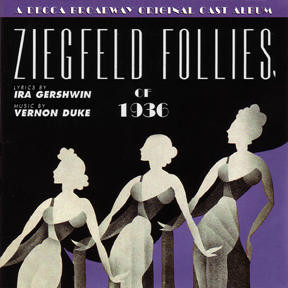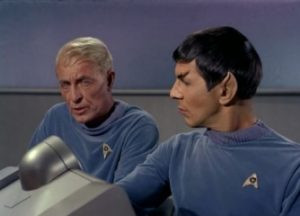 Actor John Hoyt in a promotional headshot, showcasing his distinctive patrician features
Actor John Hoyt in a promotional headshot, showcasing his distinctive patrician features
John Hoyt. The name might not instantly ring a bell for everyone, but his face is undeniably recognizable. For many, Actor John Hoyt was the quintessential “mean man” of Hollywood and television, a performer who excelled at portraying stern authority figures, cold villains, and unyielding antagonists. While these roles cemented his place in the entertainment industry, they only scratched the surface of a multifaceted talent and a life story filled with surprising depth. This exploration delves deeper into the career of actor John Hoyt, revealing the man behind the often-villainous characters and celebrating his remarkable versatility.
From Stage to Screen: The Early Career of John Hoyt
Born John Hoysradt in Westchester County, New York, in 1905, Hoyt’s path wasn’t initially set for the screen. His banker father envisioned a similar future for his son, but Hoyt’s mother and sisters fostered his artistic inclinations. He displayed a talent for classical piano and mimicry, skills that would prove invaluable in his burgeoning acting career. Hoyt honed his theatrical skills at Yale University, where he earned both Bachelor’s and Master’s degrees and presided over the Dramatic Association.
His early career was deeply rooted in the theater. In 1932, he joined the esteemed Katherine Cornell’s acting company. His musical talent became immediately useful when he served as Cornell’s offstage “ghost” pianist for her role as a concert pianist in “Alien Corn.” This collaboration led to roles in Cornell’s repertory tour, where he shared a train cabin with another rising star, Orson Welles. This connection proved significant as Hoyt later joined Welles’ groundbreaking Mercury Theatre in 1937. Prior to his Hollywood foray, Hoyt also graced the stage of the Ziegfeld Follies of 1936, alongside legends like Bob Hope and Josephine Baker, demonstrating his early versatility in both comedic and dramatic settings.
 Cast album cover for Ziegfeld Follies of 1936, featuring names of prominent performers including Bob Hope and Fanny Brice
Cast album cover for Ziegfeld Follies of 1936, featuring names of prominent performers including Bob Hope and Fanny Brice
Hollywood and the Reign of the Character Actor
At the age of 40, John Hoysradt became “John Hoyt” when he moved to Hollywood and signed with Paramount Studios. The name change marked a new chapter, and Hollywood quickly capitalized on Hoyt’s talent for dialects and his commanding presence. He became a go-to character actor, particularly adept at portraying antagonists during a period when audiences loved to dislike on-screen villains.
Hoyt’s filmography is a testament to his range. He portrayed stern figures in iconic films like “Blackboard Jungle” (1955), played a bewildered Roman military leader in “Spartacus” (1960), and even appeared in “Cleopatra” (1963) alongside Elizabeth Taylor. On television, he became a ubiquitous presence, appearing in virtually every popular series from the 1950s through the 1970s. Whether it was “Perry Mason,” “The Twilight Zone,” “Hogan’s Heroes,” or “The Outer Limits,” Hoyt brought a distinct individuality to each role. Despite often being cast as the heavy, Hoyt’s performances were never one-dimensional. He imbued his characters with a nuanced intensity that made them memorable, even when playing stereotypical roles.
Beyond the Screen Persona: John Hoyt’s Personal Life
While his on-screen persona often projected sternness, those who knew John Hoyt personally painted a different picture. His second wife, Dorothy Haverman, whom he married after the passing of his first wife, Marian Burns, described him as a man of “distinction, culture and an engaging manner.” She highlighted his effortless talent, noting his ability to quickly memorize scripts and his natural charisma.
In a revealing conversation with the author of the original article, Dorothy Hoyt disclosed a deeply personal aspect of her husband’s life: his homosexuality. This revelation, later corroborated by award-winning journalist Paul Grondahl in his biography of Erastus Corning, adds another layer to understanding actor John Hoyt. According to Grondahl, Dorothy spoke openly about John’s sexuality and their understanding within their marriage. This aspect of his life, while private during his career, offers a richer perspective on the man behind the roles. It suggests a complexity and perhaps an underlying sensitivity that informed his performances, even in the most seemingly cold-hearted characters.
Later Years and Enduring Legacy
In his later years, Hoyt continued to work prolifically. He took on the role of Grandpa Kanisky in the sitcom “Gimme a Break!” showcasing his comedic timing. For science fiction fans, he is fondly remembered as Dr. Phillip Boyce, the wise chief medical officer in the original pilot episode of “Star Trek,” “The Cage,” alongside Leonard Nimoy.
 John Hoyt (left) as Dr. Phillip Boyce and Leonard Nimoy (right) as Spock in the pilot episode of Star Trek, "The Cage"
John Hoyt (left) as Dr. Phillip Boyce and Leonard Nimoy (right) as Spock in the pilot episode of Star Trek, "The Cage"
Despite facing personal challenges, including a suspected link between his cancer diagnosis and filming “The Conqueror” near a nuclear test site, Hoyt maintained a remarkable work ethic. Even in his 70s, he commuted hundreds of miles for television work, demonstrating his dedication to his craft.
Actor John Hoyt passed away in 1991, leaving behind a legacy as a consummate character actor. As film historian Marc Scott Zicree noted, Hoyt possessed the rare ability to “infuse individuality into every role,” ensuring that even minor characters became unforgettable. While he may be best remembered for playing villains, John Hoyt’s career was a testament to his versatility, talent, and enduring presence in the world of entertainment. He remains a celebrated figure for those who appreciate the depth and artistry of character actors who enrich every project they touch.
